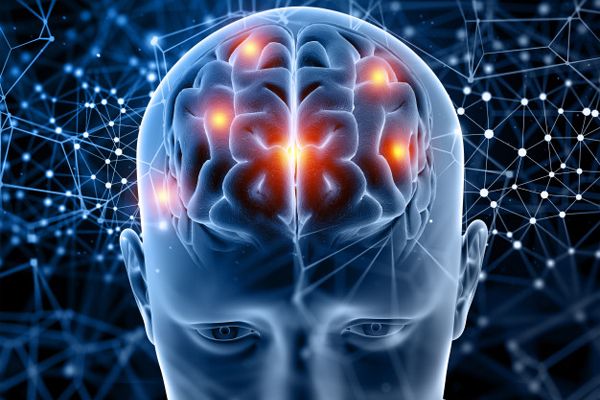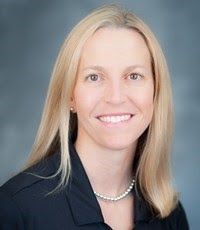Welcome back to the Healing Pain Podcast with Carey E. Rothschild, PT, DPT, OCS, SCS, CSCS
Joining me is one of our faculty members, Dr. Carey Rothschild. She’s going to talk to you all about the importance of pain science and pain education in practice, whether you are a physical medicine or mental health professional. Let me first introduce Carey to all of you. Dr. Carey Rothschild is an Assistant Professor in the Doctor of Physical Therapy Program at the University of Central Florida. In addition to earning her DPT, she’s Board-Certified in Orthopedic Physical Therapy and Sports Physical Therapy. She earned a Certificate of Achievement in Pelvic Physical Therapy. Her research related to running and the female athlete has been published in the Strength & Conditioning Journal, the Journal of Strength and Conditioning Research, Sports Health and the Journal of Women’s Health Physical Therapy.
In 2019, Carey received the award for Excellence in Academic Teaching from the Florida Physical Therapy Association. A big part in her earning that award was for her innovation, developing and teaching a course on Pain Science, Pain Education and Pain Rehabilitation to both physical therapy students. Even some other healthcare professionals like social workers down at the University of Central Florida. I’m super excited to be sharing this masterclass with you. Carey has got lots of great information with regards to pain education. Carey, the best place to start for those that are wondering and curious about pain education is, what is pain education and how do you define that?
—
Watch the episode here:
Subscribe: iTunes | Android | RSS
MasterClass: Pain Science Education With Carey Rothschild, PT, DPT, OCS, SCS, CSCS
Joining me is one of our faculty members, Dr. Carey Rothschild. She’s going to talk to you all about the importance of pain science and pain education in practice, whether you are a physical medicine or mental health professional. Let me first introduce Carey to all of you. Dr. Carey Rothschild is an Assistant Professor in the Doctor of Physical Therapy Program at the University of Central Florida. In addition to earning her DPT, she’s Board-Certified in Orthopedic Physical Therapy and Sports Physical Therapy. She earned a Certificate of Achievement in Pelvic Physical Therapy. Her research related to running and the female athlete has been published in the Strength & Conditioning Journal, the Journal of Strength and Conditioning Research, Sports Health and the Journal of Women’s Health Physical Therapy.
In 2019, Carey received the award for Excellence in Academic Teaching from the Florida Physical Therapy Association. A big part in her earning that award was for her innovation, developing and teaching a course on Pain Science, Pain Education and Pain Rehabilitation to both physical therapy students. Even some other healthcare professionals like social workers down at the University of Central Florida. I’m super excited to be sharing this masterclass with you. Carey has got lots of great information with regards to pain education. Carey, the best place to start for those that are wondering and curious about pain education is, what is pain education and how do you define that?
Joe, thanks for having me. I’m excited to be here talking to you about pain education. For me, the definition is twofold. The healthcare provider first needs to become educated about pain themselves as a practitioner and that would include the basics, the neurobiology of pain, the mechanisms of pain and that multi-dimensional nature of pain. That piece first and then what a lot of practitioners might be familiar with is the healthcare provider taking this education to the patient or the client that they might be seeing who has persistent pain.
Many practitioners reading this blog are probably familiar with pain neuroscience education, explain pain or anything similar. Those metaphors and analogies are super helpful to educate the person who is having pain but I think pain education goes beyond just that piece. It also incorporates that multi-dimensional aspect of treatment, which includes both physical and cognitive types of therapies that will be beneficial for the comprehensive care of the patient who has pain.
That multi-dimensional perspective is what is driving professionals. It’s what they are looking for. “How do I treat this multi-dimensional problem that is in my clinic every day?” How does a professional start to weave pain education into their clinical practice? When I teach courses, one of the first questions are, “Do I need extra time? Do I have to rearrange my entire schedule? How does it seamlessly work itself in?”
Once the healthcare provider is feeling comfortable with their knowledge of pain, the multi-dimensional nature of pain and all the things that contribute to the pain experience, this educational piece starts right with the examination of the client or the patient right at that first visit. It involves asking the right questions, spending time on developing that therapeutic alliance and understanding what the patient’s expectations are for the healthcare session with that provider. Also, developing that mutual respect and coming to some collaborative realistic goal setting. That is how we start to integrate it.
A practitioner can use those metaphors and analogies and explain pain to help the patient understand what it is that’s happening to their body, their nervous system and why they are experiencing things that they are experiencing. Follow that up with that multi-dimensional aspect of treatment that’s going to include not just that educational piece but weaving it into, if you are talking with the patient and giving them advice on how to start moving in a less fearful type of environment and then also, discussing those lifestyle factors that have the influence.
Sometimes it might be bringing that alarm system down a little bit by alleviating some stress including those psychological interventions like cognitive behavioral therapy, acceptance and commitment therapies, teaching some coping skills and some breathing activities. Also, supplementing with other integrative management of pain with the different practitioners that can assist with the physical treatments. Physical therapists can administer modalities, massage therapists can do manual therapy and manual therapists can do those types of things as well. To answer that question, there are multiple avenues for where that pain education assists the professional in managing the patient with pain.
You have mentioned physical therapists, cognitive behavioral therapy and ACT, which you think of as mental health professionals. You already mentioned a massage professional. It sounds like this course that you are about to launch is appropriate for all healthcare professionals. Pain education is not just for the physical therapists but it’s for every health professional.
In my experience down here at the University of Central Florida, we have been doing some interprofessional events. We have had this team where we are having our students integrate with the medical, nursing, pharmacy, social work and counseling education students. We have our students all collaboratively working together to treat a patient with chronic low back pain. It’s a neat way to see how all professions can benefit from this pain education.
I know you have a case study. You are going to talk about a 45-year-old female who has chronic pelvic pain and low back pain. Before we get to that case study, all therapists and professionals are always concerned about, “How do I bill for this? What do I do? I’m in the clinic. There are productivity demands on me, something that relates to bringing income into the facility.” How can you bill for pain education?

It’s a multitude of ways. If we have this big overarching umbrella of pain education, that’s the practitioner’s knowledge about pain. If you are understanding more how the pain system works and you are trying to retrain movement, for physical therapists, that may fall into therapeutic activities and therapeutic exercise. It does fall in nicely and doesn’t take extra time because a lot of the things that you are doing with the patient are the talking part while they are doing something beneficial.
For physical therapists, particularly, we already educate and counsel patients on body mechanics, pain management strategies at home and self-care types of things. If we work in a practice setting where you have more time, if you are in a setting where maybe it’s a cash-based pay format, you might have more time to do these types of things. It depends on the setting that you work in. You don’t need extra time because it should fall right into some of the interventions that you would probably already be doing as part of your healthcare practice.
You mentioned pain neuroscience education and explained the pain. Professionals are familiar with those as different types of pain education approaches, more for taking that and working with the patient. How does this course, Pain Education for the Healthcare Professional, differ from those?
There are two main points on how this is different. Pain neuroscience education and explained pain is a component of the overall pain education experience for a healthcare provider. Number one, this will help the healthcare provider be better able to accurately assess patients that are having pain and most likely persistent pain. That begins with understanding some basics of pain neurobiology and recognizing a lot of the different individual variability factors that play into the patient’s pain experience. I also plan to implement the evidence-based outcome measures that are utilized for assessing and looking for a change in the patient’s overall pain report as well as function. Some of those outcome measures can be used to assess the level of fear in a person or the level of catastrophizing that might be present with an individual.
There’s a good chunk of the time spent on how you can maximize the patient and provider therapeutic alliance. That’s what some educators have returned as soft skills. Once you get those soft skills developed as a healthcare provider, that is something that can take you a long way and achieve better outcomes with your patients. The second point then is not just the assessment but also the management. I know I have alluded to that multi-dimensional aspect or that integrative management of the pain experience but that does include the pain neuroscience education. Pain neuroscience education alone, as the research says, is not the only thing that you should be doing. We must incorporate movement, maybe modalities or other adjunctive types of therapies like acupuncture, manual therapies, soft tissue massage, mobilization and joint manipulations.
Additionally, the lifestyle management, which I know you have had a lot of wonderful people on here to talk about that. Having chats with your patients about their diet, sleep and stress management, and then maybe directing them to a healthcare provider that is in psychological interventions that can help patients learn coping skills, maybe mindfulness and meditation. Also, some of those other psychological interventions. This course is comprehensive. It takes you from the most beneficial evidence-based assessment. You can better do that when you have the knowledge base, and then taking that better defining the mechanism behind the patient’s pain and then drive the right treatments that are multi-dimensional.
Learning how to assess pain, learning how to identify the mechanisms and leveraging those mechanisms for treatment and, which treatment to apply. That’s key rather than just applying metaphors or a certain exercise so to speak. In essence, what you have done is you have turned pain education into personalized pain education, which is important because everyone’s pain is unique. That’s what this course helps you figure out and helps you solve with people. Let’s turn toward the case study. You have a case study that you want to share with us. It’s a 45-year-old female with chronic pelvic pain and low-back pain.
This client came to see me for physical therapy services. She had two young children at home. She had had pregnancy twice and they were both delivered via cesarean section. She told me she had pain for about five years. It’s correlating with the pregnancy and the delivery. She came to see me and she had generalized pain. She had general low-back pain and general abdominal and pelvic pain. She was concerned because she had gained weight. She was also diagnosed with depression. She was taking medication.
She had come to see me after she had visited some other practitioners that hadn’t been able to help her. She was anxious to get back to doing some exercise and she wanted to keep up with her kids. She felt like she was having a hard time just walking the dog. Thinking about all those different avenues that this patient has been in, as a physical therapist, maybe using a biomedical model, I may have focused on what’s happening to the low back, abdomen and pelvic region. I zoned in on maybe the core strength or maybe the flexibility as a physical therapist might do.

We spent the first session probably doing mostly talking and building that therapeutic alliance. Some of the things that I will be speaking about in this course have to do with those initial examination questions that you will have for a patient and giving that patient some validation that she has a stressful life. She has two children that she’s trying to raise and she’s also had a diagnosis of depression. We know that using that biopsychosocial approach, we have to consider, the biology, and then on the psychosocial piece, we had to consider that she did have some depression. She did have a lot of stress. One of her children being diagnosed with ADHD. You keep pulling all of these elements out of what’s happening at home.
I listened to a podcast and they used the term life load and I thought that was good. I said, “You have a lot of life load going on. What if you were to imagine yourself on a beach with your husband, relaxed with no kids and nothing going on, do you think your pain might be lower?” She’s like, “Yes, we did take a little trip for our anniversary.” I said, “Did you have any pain that weekend?” She said, “No, not really.” We used some metaphors, analogies and incorporated the pain neuroscience education. We looked at the biology and she did have a diastasis recti abdominis. There was some separation of the abdominal muscles.
She wanted to go back to doing some yoga and she was concerned about that. She disliked the appearance of her abdomen that it’s almost like it wasn’t even a part of her body. Some of the treatments that we can do in terms of getting back to movement are bringing that body part back into the brain and recognizing that that body part is part of her. One of the strategies I had her do is I had her get a catalog and look at a little mailer of bathing suits. I said, “I want you to circle a bunch of stomachs and I want you to recognize that those stomachs are great. Your stomach has held babies and your stomach has prepared for these wonderful boys that you have.”
She did it and she came back and she’s like, “I feel better about my stomach. I would never have even thought about that had I not realized some of the neurobiology and how our brain almost disconnects from the body part that is experiencing the pain.” She was fascinated. We had these little elements right at the beginning that she bought in. We made these goals together and she wanted to walk a certain distance, be able to do things with her kids and get back to yoga. We brought that abdomen back in. She did have some scarring and things like that. We worked on the biology and we improved the tissue mobility of her scars. We started her moving and she did great.
These were skills that I did not learn in my entry-level degree. Having gone to lots of different continuing education courses and has developed this type, of course, will provide a practitioner to have all these different options and treatments that go beyond, “Let’s do some crunches or pelvic tilts.” “Let’s do some forward bending and some yoga stretches.” We did get her to that point. She was happy with her outcomes and she did achieve the goals.
Ultimately, the time that we spent right at the beginning and pulling out all those factors, even giving her some strategies for breathing when she felt some stress come on, some strategies for coping and some distractive techniques that I did not learn in my entry-level degree, that’s a little snapshot of the patient. Thankfully, some education was able to be used from a pain science perspective but it was the multitude of all the different multi-dimensional treatments that we were able to use to get her to achieve her realistic goals.
I love the way you folded all of that together because I realized that it takes a special practitioner and it also takes education and practice to be able to talk about it that way you did. I know there are people out there who are thinking, “What did she do? When did she do it? How did she do it?” The real sign of a skilled clinician is what you said. It’s innate to you. There are all these pieces but you have learned how to fold this in a way that is easy for clinical practice and helps the patient get better. I appreciate that.
All of you can register for Carey’s course. It’s called Pain Education for the Healthcare Professional. It’s worth seven CEUs/CEs. The institute, as you know, is approved for physical therapists CEUs, OTs, and health coaches. The institute is approved by the American Psychological Association for CEs for psychologists. It’s approved for mental health providers also. I know there are tons of mental health providers that follow my work on the show and I highly encourage you to take this course because oftentimes, pain education is the one thing that’s missing from a CBT or an ACT approach. If you are a mental health provider and you feel like that was missing from your school training, this is the course to take. Carey, can you give us a rundown of the course and what people can expect each week?
Joe, you hit the nail on the head. This is the course to get the practitioner up to speed with what is the International Association for the Study of Pain’s goals for various healthcare providers. There is a curriculum out there established by the IASP. This course follows some of those basic objectives that are the goal for a modern practitioner treating patients with pain. In week one, we are going to have a crash course on pain neurobiology and learn about the multi-dimensional nature of pain, the peripheral and central pathways and be familiar with those key three mechanisms in pain.

In week two, we will talk about the individual differences and the variability that may be related to sex, gender and personality. We will also look at some of the evidence-based outcome measures that can be used for the pain assessment, both subjective types of scales, pain-specific scales, as well as some psychological questionnaires. In week three, we will start to get into some of the management of pain but focusing on those soft skills developments. Incorporating and understanding how patient expectations and patient preferences play into the whole outcome, and then some good skills on developing that positive therapeutic alliance between the provider and the patient.
We also will be going over basic pain neuroscience education, sharing lots of different resources for those that want to educate the patient about pain so various mechanisms of metaphors and analogies. Learning how and when to use that type of education because the patient needs to be ready to receive that education before you start speaking at them. We will do a little review of some of the exercise and movement-based therapy as well as some adjunctive modalities that can be helpful for pain management.
We will talk about some of those integrative factors that include lifestyle things. We will talk about some sleep hygiene. These are some great things that can be added to a treatment plan for a patient with pain. Some nutrition, which Joe, I know you have had lots of folks on here that learn about nutrition. We will also incorporate some case studies of typical patients that do have persistent pain. We will wrap things up at the end with some of those psychological approaches to pain management, including cognitive behavioral therapy and acceptance and commitment therapy. Also, some coping strategies including breathing, mindfulness, relaxation and helping practitioners to deliver a psychologically informed approach to managing patients in pain. That’s it.
If you have taken a course at the institute before, you will hear that this aligns well with some of the previous courses you have taken especially the current on pain science and pain education. If the assessment and treatment of pain, is missing from your skillset, then this is the course to take. Once again, you can find it by going to IntegrativePainScienceInstitute.com and scrolling over to courses. I want to thank Dr. Carey Rothschild for being with us and giving this great masterclass on pain neuroscience education. We urge you to sign up for this first cohort. We already have several people registered. We are excited to see you in the course and to work with you.
Important Links:
- Carey Rothschild – LinkedIn
- International Association for the Study of Pain
- https://gc182.Infusionsoft.app/app/orderForms/Pain-Education?cookieUUID=01747374-f40a-4fdc-834e-a373d0f0ecbe
About Carey E. Rothschild
 Carey E. Rothschild, PT, DPT, OCS, SCS, CSCS is an Assistant Clinical Professor in the Doctor of Physical Therapy Program at the University of Central Florida. Dr. Rothschild earned a Bachelor of Health Science in Physical Therapy in 1999 from the University of Florida and a Doctor of Physical Therapy from Boston University in 2005. She became board-certified in Orthopaedic Physical Therapy in 2006 (recertified 2016) and in Sports Physical Therapy in 2012. She completed the coursework in pelvic physical therapy and earned a Certificate of Achievement in Pelvic Physical Therapy in 2020.
Carey E. Rothschild, PT, DPT, OCS, SCS, CSCS is an Assistant Clinical Professor in the Doctor of Physical Therapy Program at the University of Central Florida. Dr. Rothschild earned a Bachelor of Health Science in Physical Therapy in 1999 from the University of Florida and a Doctor of Physical Therapy from Boston University in 2005. She became board-certified in Orthopaedic Physical Therapy in 2006 (recertified 2016) and in Sports Physical Therapy in 2012. She completed the coursework in pelvic physical therapy and earned a Certificate of Achievement in Pelvic Physical Therapy in 2020.
Her 20 years of clinical practice has been in the areas of orthopedics and sports medicine. Her research interests include management of running injuries, conditions of the female athlete, and pain neuroscience education. Dr. Rothschild is an avid runner, swimmer, and triathlete having completed numerous races including the Boston Marathon. She is a busy mom of three elementary school-aged children, 2 girls and a boy.
Love the show? Subscribe, rate, review, and share!
Join the Healing Pain Podcast Community today:
